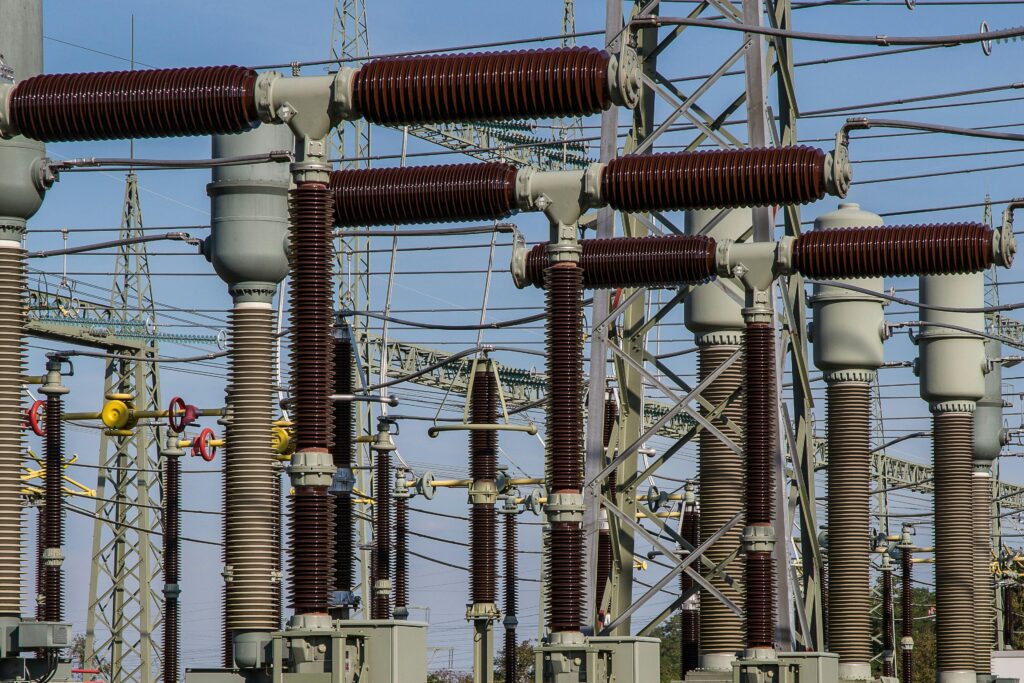In recent years, the tech industry has witnessed remarkable changes in how data is processed and managed. Traditionally, cloud computing has been the backbone of many IT systems, offering centralized data processing capabilities that have revolutionized the way we store, analyze, and retrieve information. However, as businesses, industries, and consumers demand faster processing and real-time data access, a new technology has begun to gain traction edge computing. Edge computing is the practice of processing data closer to the “edge” of the network, near where data is generated, rather than relying on centralized cloud servers.
This shift represents a significant move toward decentralization in IT, which is a move away from centralized architectures that have traditionally dominated the computing landscape. By distributing data processing across numerous local nodes, edge computing reduces latency, enhances security, and improves efficiency across various industries. As 5G networks, IoT (Internet of Things), and real-time data applications continue to proliferate, edge computing is set to become a central player in the next phase of IT evolution.
In this article, we will explore the concept of edge computing, its benefits, the growing need for decentralized IT infrastructure, and how different industries are embracing this paradigm shift. We will also examine the future potential of edge computing in driving innovation across sectors.

Understanding Edge Computing: A Paradigm Shift
At its core, edge computing refers to a distributed computing model that pushes data processing, analytics, and decision-making closer to the devices and sensors generating the data. In traditional cloud computing models, data collected from edge devices (such as IoT sensors, cameras, or machines) is sent to a central cloud server for processing. This architecture works well for many applications but introduces certain limitations, especially when dealing with latency-sensitive or bandwidth-heavy tasks.
Edge computing solves this problem by enabling localized data processing at or near the data source. For example, rather than sending video feed data from a smart security camera to the cloud for real-time analysis, edge computing allows the camera to process and analyze the video locally. This significantly reduces the time taken to make decisions, such as detecting intruders, and eliminates unnecessary bandwidth usage by transmitting only essential data back to the cloud.
The Drivers Behind the Rise of Edge Computing
The emergence of edge computing is driven by several key technological and business trends:
- Increased IoT Adoption
The Internet of Things (IoT) has revolutionized industries by connecting billions of devices worldwide, enabling them to collect and exchange data. With the growing number of IoT devices generating massive volumes of data, centralized cloud processing has become less practical. Edge computing allows IoT devices to process data locally, reducing the need for constant cloud connectivity and enabling faster response times. - 5G and High-Speed Networks
The global rollout of 5G networks is another significant factor driving edge computing adoption. With 5G’s low latency and high bandwidth capabilities, more devices can communicate with each other and process data at the network’s edge. This is especially crucial for applications that require real-time decision-making, such as autonomous vehicles and augmented reality (AR) applications. - Real-Time Processing Needs
Many applications today require instantaneous processing and decision-making. In industries like healthcare, manufacturing, and autonomous transportation, delays in processing data even milliseconds can result in dire consequences. Edge computing addresses this by reducing the latency involved in sending data to centralized servers for processing, making it ideal for time-sensitive applications. - Data Privacy and Security Concerns
With increasing concerns about data breaches and privacy violations, organizations are looking for ways to minimize the risks associated with centralized cloud storage. Edge computing enhances security by enabling data to be processed locally, reducing the amount of sensitive information that needs to be transmitted across networks. This not only minimizes the attack surface but also ensures greater control over data privacy.
Key Benefits of Edge Computing
Edge computing provides several advantages over traditional cloud-based models, making it a compelling choice for businesses looking to optimize their IT infrastructure. Below are some of the key benefits of edge computing:
- Reduced Latency
One of the most significant advantages of edge computing is its ability to minimize latency. By processing data at or near the source, edge computing ensures real-time decision-making. In scenarios like autonomous vehicles, where split-second decisions are crucial for safety, even slight delays in data transmission can have catastrophic consequences. Edge computing allows devices to operate with minimal lag, enhancing performance and safety. - Bandwidth Optimization
With centralized cloud architectures, large volumes of data need to be sent to remote servers for processing. This can strain network bandwidth, particularly in IoT environments where numerous devices are generating constant data streams. Edge computing reduces the need for such extensive data transmission by handling much of the processing locally. Only critical or aggregated data is sent to the cloud, optimizing network bandwidth usage and reducing costs. - Improved Security and Privacy
As data privacy regulations become stricter and cyber threats become more sophisticated, businesses are increasingly concerned about how and where their data is processed. Edge computing addresses these concerns by allowing sensitive data to be processed locally rather than being transmitted to distant cloud servers. This reduces the risk of data breaches and enhances privacy compliance, particularly in industries like healthcare, finance, and government. - Scalability and Flexibility
Edge computing enables organizations to scale their operations more efficiently. By distributing computing power across the network, businesses can process data at the source without overburdening their central servers. This allows for greater flexibility and responsiveness, especially in environments with fluctuating data processing needs. - Resilience and Reliability
A decentralized edge computing architecture is more resilient to network failures or disruptions than centralized systems. In a traditional cloud setup, if the connection to the central server is lost, operations may halt entirely. However, with edge computing, local devices can continue functioning independently, even when cloud connectivity is compromised. This ensures continuous service availability in critical applications like industrial automation or remote healthcare.

Decentralization in IT: Transforming Infrastructure
Edge computing represents a broader shift toward decentralization in IT infrastructure. Decentralization involves distributing computing resources and data processing across multiple locations, rather than relying on a single central point. This approach contrasts with traditional centralized IT models that depend heavily on large, distant data centers.
Decentralization offers several advantages for businesses and industries:
- Localized Control and Autonomy
Decentralized systems give organizations more control over how and where their data is processed. This is especially important in industries with strict regulatory requirements or sensitive data handling needs, such as finance and healthcare. With edge computing, businesses can maintain greater autonomy over their data and infrastructure, reducing reliance on third-party cloud providers. - Distributed Innovation
Decentralized IT architectures foster innovation by enabling more localized decision-making and faster implementation of new technologies. For example, a retail chain with edge computing capabilities could roll out new AI-driven customer experiences in individual stores without having to overhaul its entire cloud infrastructure. This localized innovation allows businesses to experiment with new ideas on a smaller scale before expanding them across the organization. - Optimized Resource Utilization
Decentralization also enables more efficient resource utilization by distributing workloads across multiple nodes or devices. Instead of overloading a central server with all processing tasks, edge devices handle some of the computation, reducing the strain on central resources. This leads to better overall performance and cost savings.

Use Cases and Industry Applications of Edge Computing
Edge computing’s potential spans numerous industries, each benefiting from its ability to process data locally, reduce latency, and improve operational efficiency. Here are some real-world applications of edge computing in various sectors:
- Healthcare
In healthcare, edge computing enables real-time patient monitoring and remote diagnostics, improving patient outcomes. For example, wearable devices like heart monitors or glucose sensors can collect patient data and process it locally, alerting healthcare professionals in case of abnormalities. This allows for quicker interventions and more personalized care.
Additionally, hospitals and medical facilities can leverage edge computing for advanced medical imaging. Instead of sending large medical scans to the cloud for analysis, edge computing can process the images locally, allowing doctors to make faster diagnostic decisions without waiting for cloud-based analysis. - Manufacturing
Smart factories, enabled by edge computing, are transforming the manufacturing industry. IoT sensors and devices installed on production lines can monitor machinery in real time, detecting potential issues before they lead to equipment failures. This allows manufacturers to perform predictive maintenance, reducing downtime and enhancing operational efficiency.
In edge-enabled factories, processing data locally ensures that the factory can continue operating even if there is a loss of internet connectivity, making the entire production process more reliable and resilient. - Retail
In the retail sector, edge computing is used to enhance the customer experience and streamline operations. For example, smart shelves equipped with sensors can track inventory in real time, automatically reordering products when stock levels are low. Edge computing enables local processing of this data, ensuring that updates are immediate, without relying on cloud-based systems.
Moreover, edge computing supports personalized marketing experiences by analyzing customer behavior in stores. Smart cameras and sensors can track customer movements, offering tailored product recommendations in real-time based on their shopping preferences. - Autonomous Vehicles
Edge computing plays a critical role in the development and deployment of autonomous vehicles. These vehicles rely on sensors, cameras, and radar to make real-time decisions on the road. By processing data locally within the vehicle, edge computing ensures that autonomous cars can navigate safely and react instantly to their environment.
Autonomous cars cannot afford the delays that would occur if they had to send data to the cloud for processing. Instead, edge computing enables vehicles to make split-second decisions based on real-time data, enhancing safety and performance. - Smart Cities
Edge computing is also a key enabler of smart city initiatives. In smart cities, thousands of IoT devices, including traffic lights, cameras, and environmental sensors, work together to optimize urban infrastructure. By processing data locally, edge computing helps cities manage traffic congestion, reduce energy consumption, and improve public safety in real time.
For instance, edge computing allows traffic cameras to analyze vehicle flow locally, optimizing traffic light timings without requiring cloud-based intervention. This leads to smoother traffic management and reduced emissions.

Challenges and Considerations in Implementing Edge Computing
While edge computing offers numerous benefits, there are also challenges that organizations must consider before fully embracing this technology:
- Infrastructure Complexity
Implementing edge computing can be complex, especially for organizations with legacy IT infrastructure. Managing a distributed network of edge devices requires careful planning to ensure seamless integration with existing systems and cloud infrastructure. Businesses need to invest in new hardware, software, and security measures to support edge computing environments. - Data Management and Integration
As data is processed locally at the edge, organizations must find ways to effectively integrate and manage this data across multiple locations. Ensuring data consistency, security, and compliance can be challenging when data is distributed across different edge nodes. Companies must invest in robust data management systems to prevent data silos and ensure that information flows smoothly between edge devices and central cloud servers. - Security Concerns
While edge computing offers enhanced privacy and security benefits by processing data locally, it also introduces new security challenges. Each edge device becomes a potential point of vulnerability in the network. Organizations must implement strong security protocols to protect edge devices from cyberattacks and ensure that data remains secure throughout its lifecycle.

The Future of Edge Computing: What Lies Ahead?
The future of edge computing is bright, with numerous industries poised to adopt and expand edge capabilities in the coming years. As 5G networks become more widely available, edge computing will enable faster and more efficient processing for latency-sensitive applications like virtual reality (VR), augmented reality (AR), and autonomous technologies.
Artificial intelligence (AI) and machine learning (ML) will also play a significant role in the evolution of edge computing. By integrating AI and ML algorithms into edge devices, businesses can enable intelligent decision-making at the local level, without the need for cloud-based processing. This will lead to more autonomous systems capable of learning from data in real time and making complex decisions on the fly.
In addition, edge computing will continue to drive innovation in industries like healthcare, manufacturing, transportation, and retail. As businesses seek to improve efficiency, reduce costs, and enhance the customer experience, edge computing will provide the decentralized IT infrastructure needed to support these goals.
Conclusion: Embracing the Edge in a Decentralized Future
The rise of edge computing marks a significant shift toward decentralization in IT infrastructure. By processing data closer to the source, edge computing offers reduced latency, enhanced security, and greater bandwidth efficiency, all while enabling real-time decision-making. As industries continue to adopt IoT devices, 5G networks, and AI-driven applications, edge computing will become a critical component of the modern IT landscape.
For businesses looking to stay competitive in an increasingly digital world, investing in edge computing is no longer optional; it’s a necessity. As edge computing continues to evolve and expand, it will unlock new opportunities for innovation, efficiency, and customer satisfaction across every sector of the global economy.
By embracing edge computing and decentralization, organizations can build more resilient, responsive, and scalable IT infrastructures that will serve them well in the years to come.

